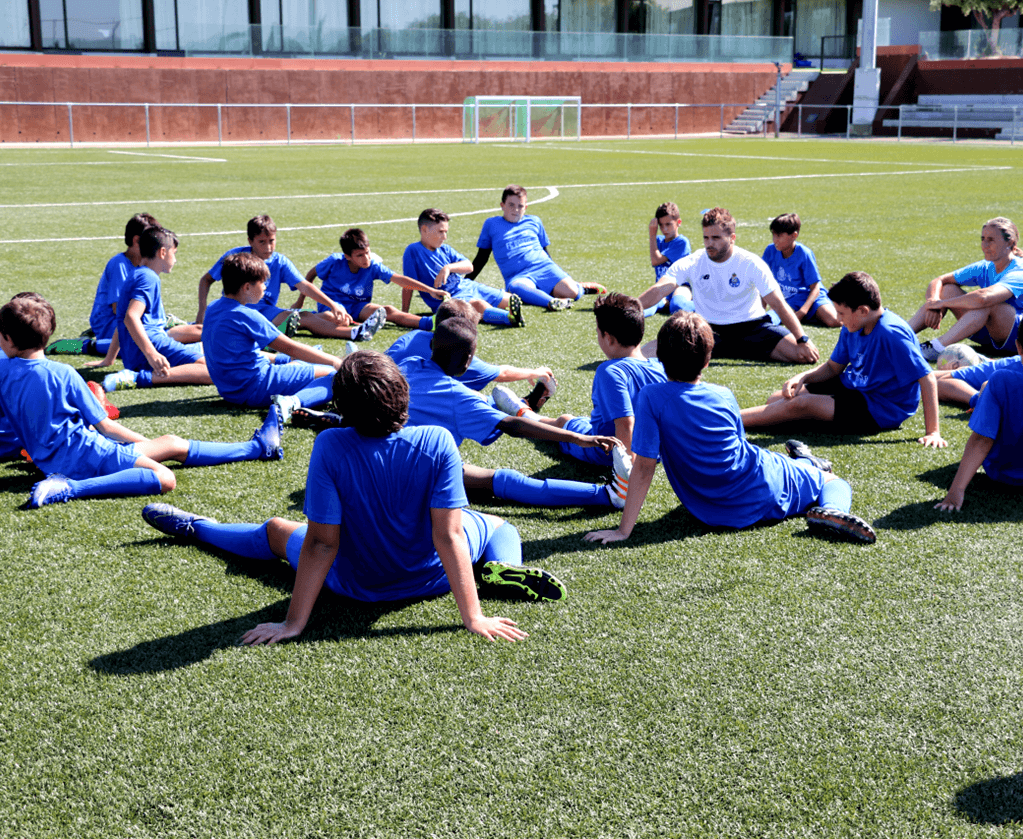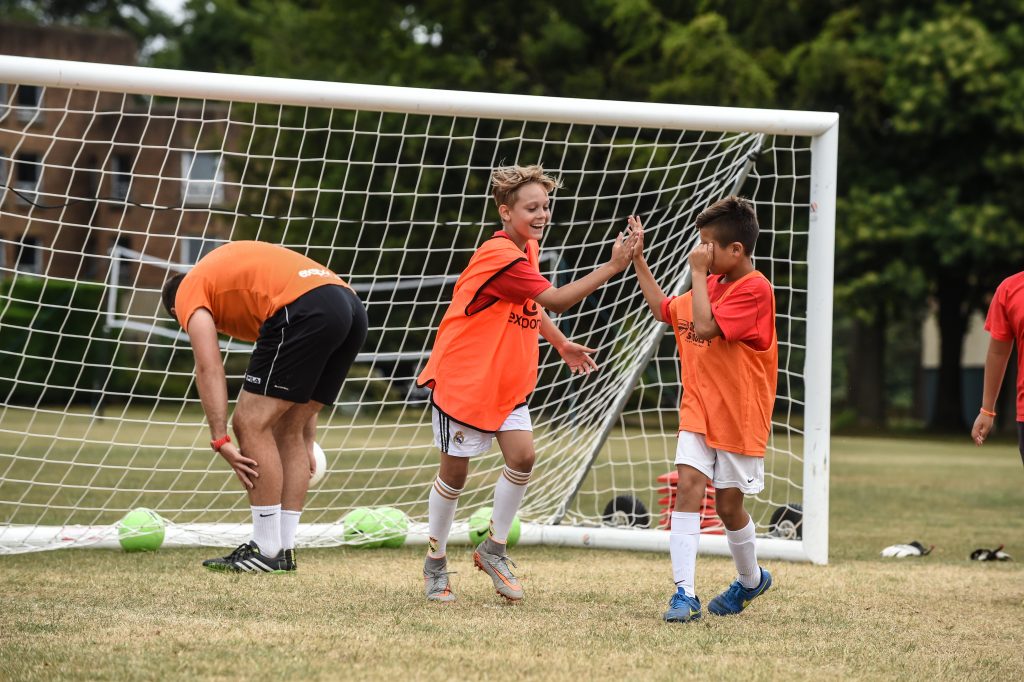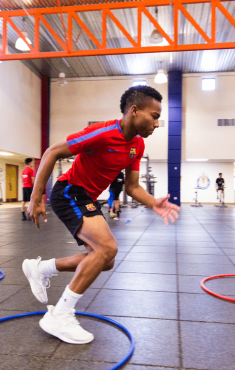Would you like to learn how to treat minor sports injuries? Minor youth sports injuries like strains and sprains are very common, especially for dedicated young athletes who spend their summers at summer soccer camps or summer tennis camps or other summer sports programs to improve their skills. Although minor sports injuries are common and not usually serious, they can lead to more serious injuries if not taken seriously. One of the greatest mistakes young athletes make is not fully recovering from their minor injuries before getting back in the game. When young athletes jump back in the game too early, they put themselves at risk for major injuries which could ruin their athletic careers. That’s why learning how to treat minor sports injuries is so important for athletes, parents, and coaches.

Signs and symptoms of minor sports injuries
When athletes suffer from major injuries, they show signs almost immediately. In most severe cases, they won’t be able to put pressure on the joint and won’t be able to keep playing. In some cases, the athlete will need surgery followed by physical therapy to recover.
An athlete with a minor sports injury like a sprain or strain will likely notice the pain but might associate the pain with normal soreness. Likewise, their coach might not notice their slight limp or slightly swollen ankle. That’s why it’s important for athletes, parents, and coaches to understand and pay attention to the signs and symptoms of minor sports injuries as well.
Here are some common signs and symptoms of minor sports injuries like sprains and strains:
- Pain
- Swelling
- Bruising
- Muscle weakness
- Muscle spasm
- Limited ability to move the affected joint
- Cramping
- Hearing or feeling a pop or tweak in the join at the time of the injury
How to treat minor sports injuries
In many cases, especially for teenage athletes who compete at an intermediate or advanced level, coaches or physical trainers provide treatment plans for injured athletes. In other cases, especially for younger athletes, coaches might just sit the player on the bench or tell them to ice their injury without much further instruction.
We wanted to know the best way to treat and recover from minor sports injuries, so we did some research. Here’s what we found:
Icing isn’t the best advice and neither is complete rest
Have you heard of the acronym R.I.C.E.? R.I.C.E. stands for Rest, Ice, Compress, and Elevate (in more recent years, P.R.I.C.E. to add a P for Protection) and has been used as the standard treatment for soft tissue injuries since first introduced by Dr. Gabe Mirkin in his bestselling Sportsmedicine Book in 1978.
Coaches, parents, and athletes have been using the R.I.C.E method for years, and many still continue to use it. That being said, the research used to create R.I.C.E. is now over 40 years old. Since R.I.C.E was first created, researchers have discovered that while reducing inflammation can reduce pain, it also slows the healing process. This means that while the first two letters of R.I.C.E. (rest and ice) might be good for reducing pain, they’re likely bad for recovery.
In 2015, Dr. Mirkin actually took back his support for his own R.I.C.E. treatment method. In his article title Why Ice Delays Recovery, he wrote, “Coaches have used my ‘RICE’ guideline for decades, but now it appears that both Ice and complete Rest may delay healing, instead of helping.”
Dr. Mirkin cited research from the Federation of American Societies for Experimental Biology (2010) to conclude that healing requires inflammation and anything that reduces inflammation also delays healing. That’s right. Ice and even ibuprofen can actually delay an athlete’s healing.
Medications may slow down the healing process
Here’s a list of other medications and actions that, according to Dr. Mirkin, injured athletes shouldn’t be taking:
- Cortisone-type drugs
- Almost all pain-relieving medicines, such as non-steroidal anti-inflammatory drugs like ibuprofen (Pharmaceuticals, 2010; 3(5))
- Immune suppressants that are often used to treat arthritis, cancer or psoriasis
- Applying cold packs or ice
- Anything else that blocks the immune response to injury
Does all this mean young athletes should take ibuprofen or ice their injury? Not necessarily. It’s all about finding a balance between reducing the pain and inflammation until it’s bearable and then allowing the body to naturally heal itself.
Tips to recover from sports injuries
Ice is still okay, but not for too long. Dr. Mirkin recommends applying ice for up to 10 minutes immediately after an injury to reduce swelling, removing the ice for 20 minutes, and repeating the process for up to six hours after the injury. “There is no reason to apply ice for more than six hours after you have injured yourself,” he said.
Rest is also still okay, but not for too long. While some rest after spraining or straining a muscle is necessary, athletes shouldn’t completely immobilize their muscle or rest for too long. Researchers have recently discovered that a long period of immobilization can lead to decreased muscle strength and flexibility and may actually delay the athlete’s recovery.
Follow the P.O.L.I.C.E. model.
Replacing R.I.C.E. with P.O.L.I.C.E.
Verywellhealth, goPhysio, and other fitness and health professionals are making the switch and endorsing the P.O.L.I.C.E. principle instead of R.I.C.E. or P.R.I.C.E. The new acronym stands for Protection, Optimal Loading, Ice, Compression, and Elevation. In P.O.L.I.C.E, Optimal Loading replaces Rest.
Protection: Rather than totally resting the injured area, it’s a better idea to simply protect it from further injury. Rest immediately after the injury, but total rest should be limited and paired with Optimal Loading (below).
Optimal Loading: Optimal Loading means progressively adding more weight or force to the injured area. Optimal Loading builds strength and tolerance in the injured tissue to promote faster healing.
Ice: Applying ice can help reduce the swelling around the area as well as any pain the athlete may be experiencing. Icing is only recommended, however, for up to 20 minutes every few hours. It’s also only recommended during the first few days after the injury was sustained.
Compression: Using a compression bandage can help reduce swelling.
Elevation: Elevation can also help reduce swelling and ease pain when the injured body part is elevated above heart level.
Advice for parents
It’s not always easy to tell whether your child is injured or how serious their injury is. Many young athletes don’t understand the importance of caring for their injuries, especially if their injury is minor and they can keep playing with minimal pain. They don’t understand that these injuries, although minor, often lead to more serious injuries and should be taken seriously as well.
Therefore, as a parent, one of the best things you can do for your child is to educate them about the importance of caring for their injuries. Encourage your child to speak up when they experience any physical discomfort. That way, you and their coach can assess the situation and determine whether or not they should visit the doctor and/or what kind of treatment plan they should follow for a fast and speedy recovery. You can also teach them how to treat minor sports injuries by sharing what you learned in this article with them.

References
[i] https://www.cdc.gov/headsup/pdfs/youthsports/course/HU-YSC_Transcript_2017-a.pdf
[ii] https://www.brainline.org/article/concussion-and-sports
[iii] https://www.cdc.gov/mmwr/volumes/67/wr/mm6724a3.htm
[iv] https://www.xlntbrain.com/concussions/signs-symptoms-risks-consequences/
[v] https://www.cdc.gov/headsup/pdfs/youthsports/course/HU-YSC_Transcript_2017-a.pdf
[vi] https://www.mayoclinic.org/diseases-conditions/concussion/symptoms-causes/syc-20355594
[vii] https://kidshealth.org/en/parents/concussions.html
[ix] https://www.cdc.gov/headsup/basics/return_to_sports.html
[x] https://kidshealth.org/en/kids/strains-sprains.html
[xi] https://www.urmc.rochester.edu/encyclopedia/content.aspx?contenttypeid=1&contentid=1889
[xii] https://www.drmirkin.com/fitness/why-ice-delays-recovery.html
[xiii] https://www.ncbi.nlm.nih.gov/pmc/articles/PMC5609374/

